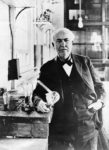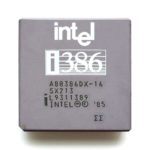Podcast: Play in new window | Embed
 This week in 1879 – Thomas Edison invented a workable electric light bulb at his laboratory in Menlo Park, N.J. During his test, the bulb lasted 13 and a half hours. This would be the invention of the first commercially practical incandescent light. Popular belief is that he invented the first light bulb, which he did not. The first electric light was actually created in 1802 by English scientist Humphry Davy.
This week in 1879 – Thomas Edison invented a workable electric light bulb at his laboratory in Menlo Park, N.J. During his test, the bulb lasted 13 and a half hours. This would be the invention of the first commercially practical incandescent light. Popular belief is that he invented the first light bulb, which he did not. The first electric light was actually created in 1802 by English scientist Humphry Davy.
1954 – Texas Instruments announced the first Transistor radio. They quickly became the most popular electronic communication device in history, with billions manufactured during the 60s and 70s.
In 1984 this week – The Airfone service was launched on 20 flights for those who had credit cards. Of course, you paid for that convenience of talking on the phone  while in the air. Costs for the service was $7.50 for a three-minute call, $1.25 for each additional minute anywhere you wanted to call in the US.
while in the air. Costs for the service was $7.50 for a three-minute call, $1.25 for each additional minute anywhere you wanted to call in the US.
1985 – Intel introduced the 32-bit 80386 microcomputer chip. It was the first Intel *86 chip to handle 32-bit data sets. It ran at speeds of up to 33 MHz — blazingly fast in 1985.
And this week in 1998 – Microsoft and prosecutors for the U.S. Department of Justice and twenty states met in federal court. It was the beginning of the antitrust case against the Microsoft Corporation.

